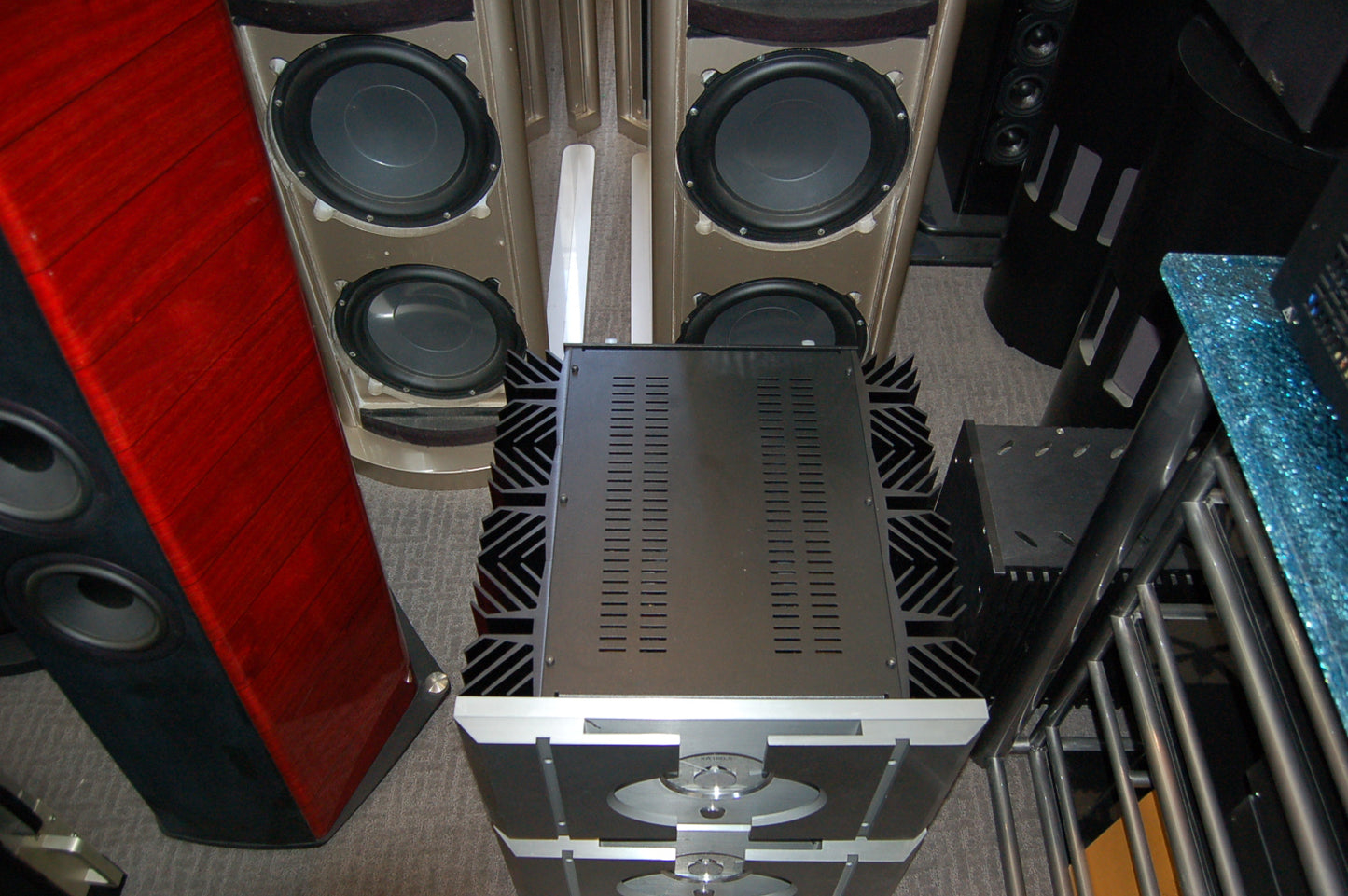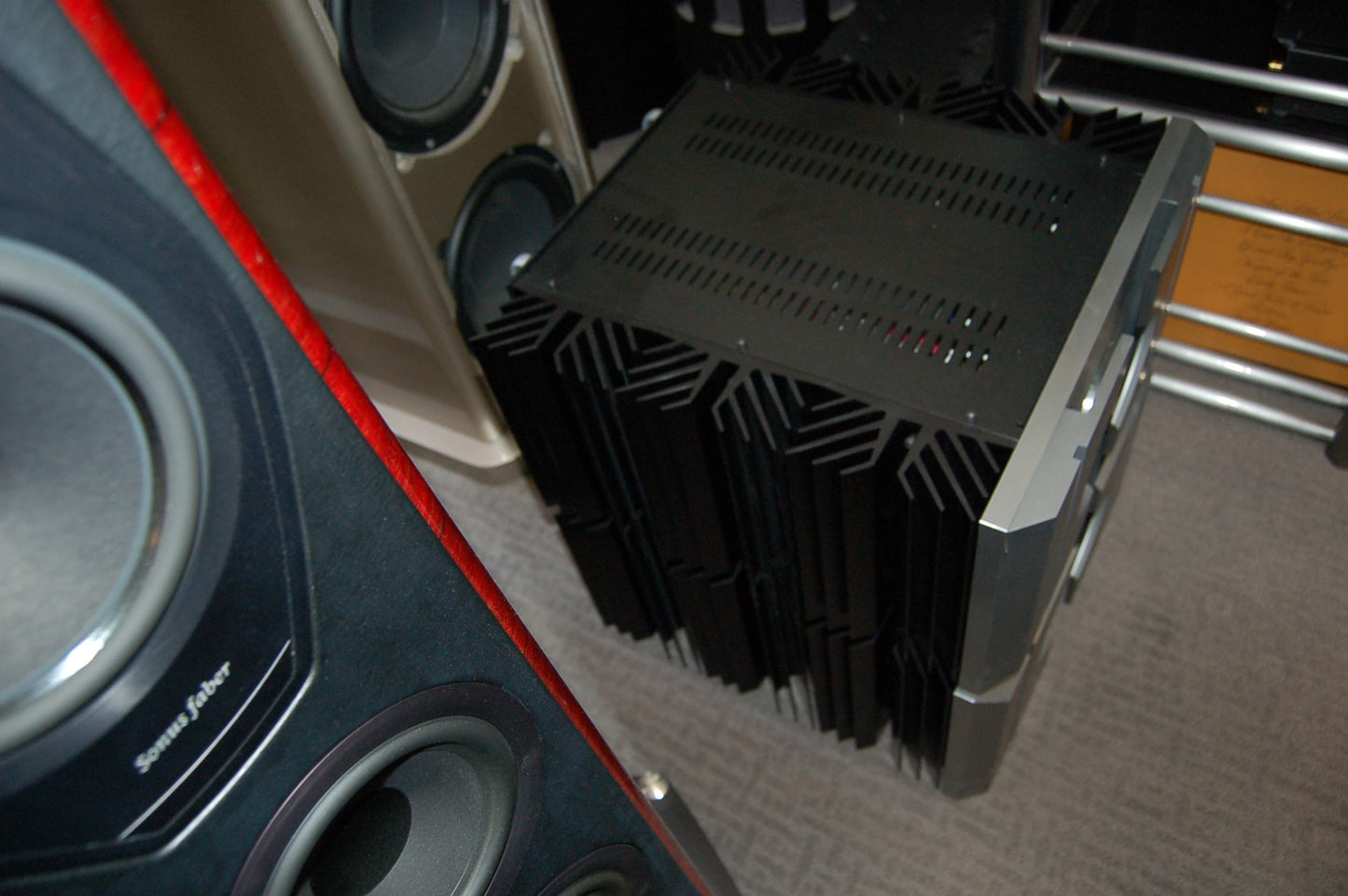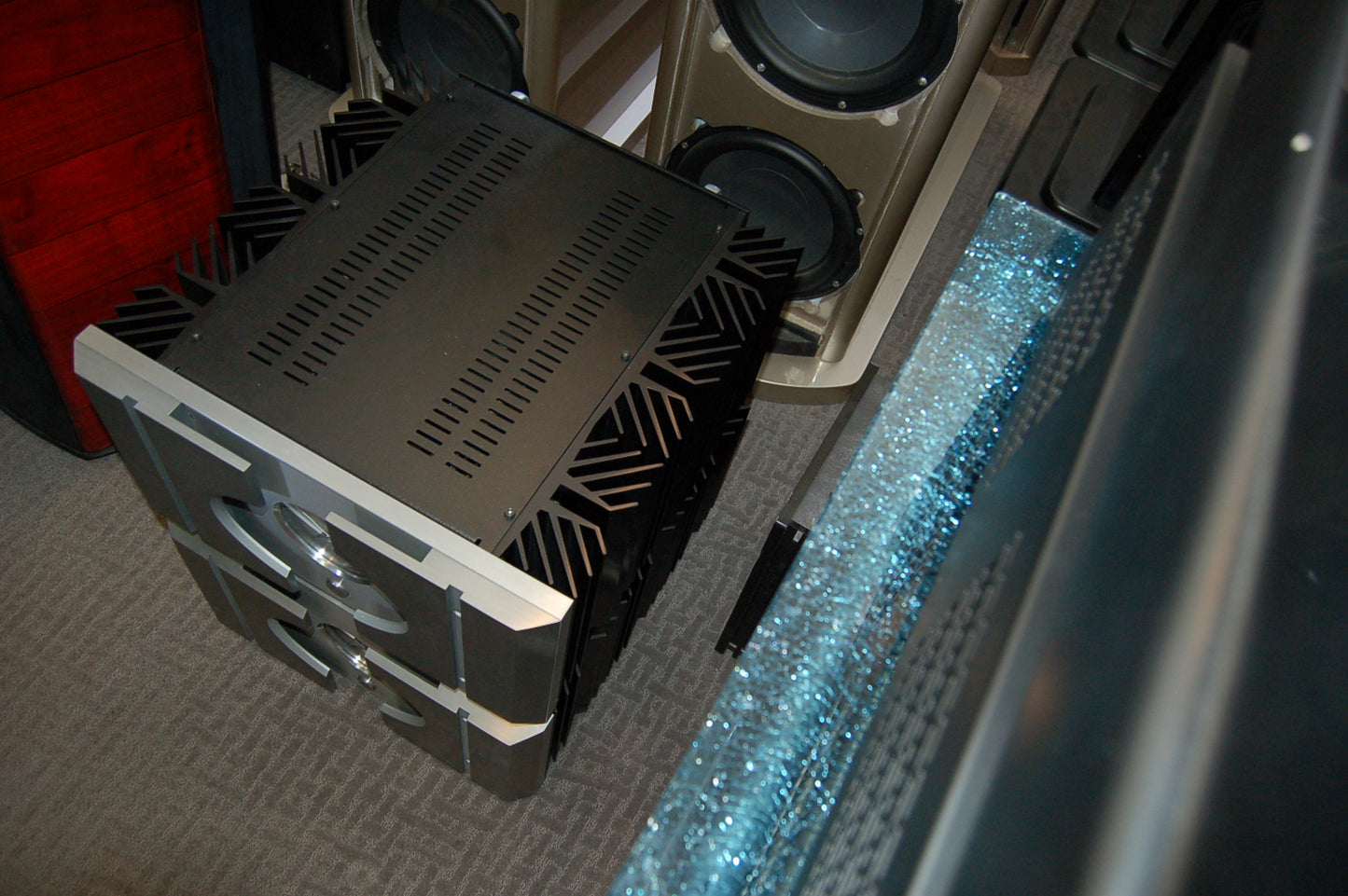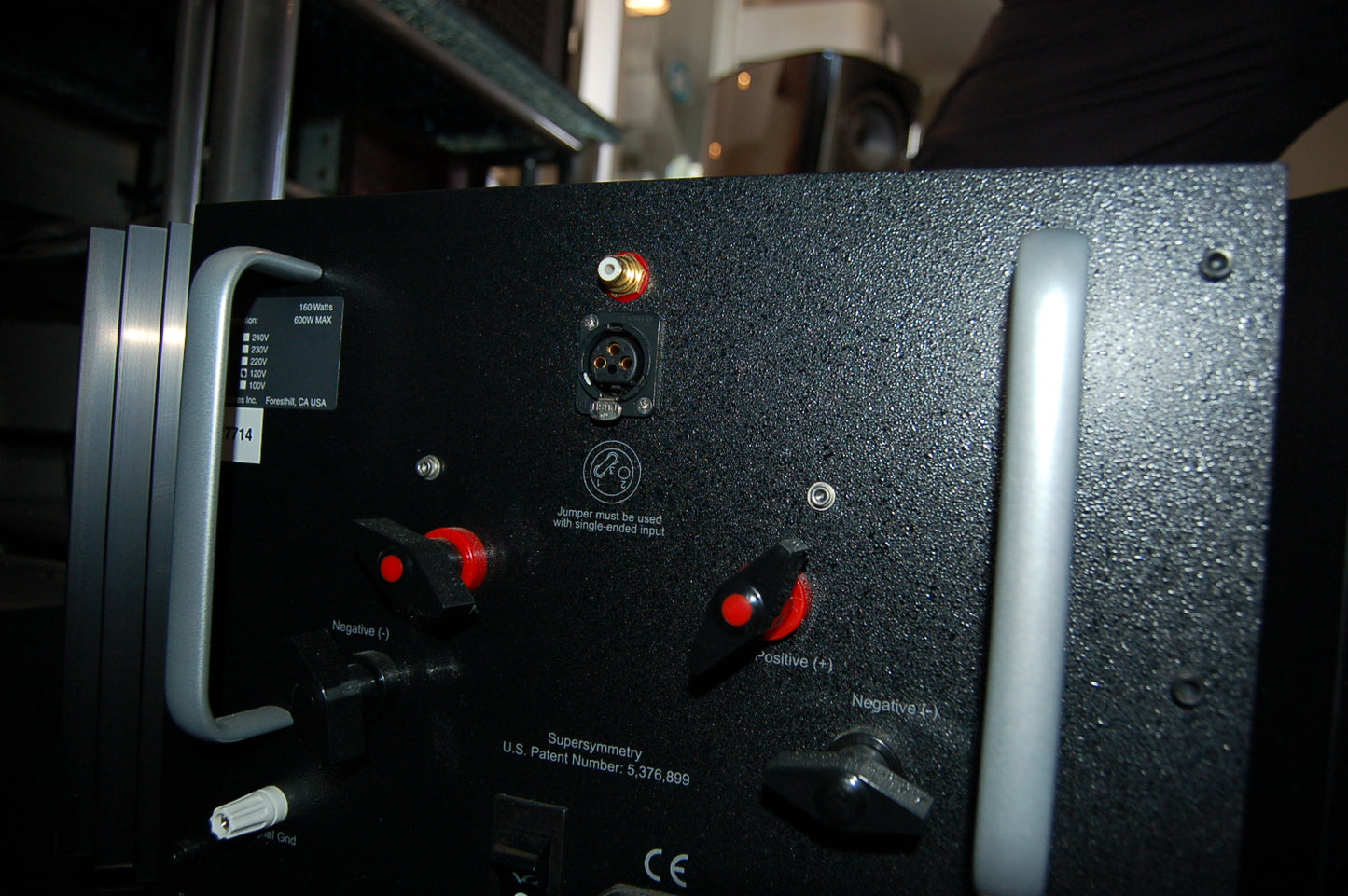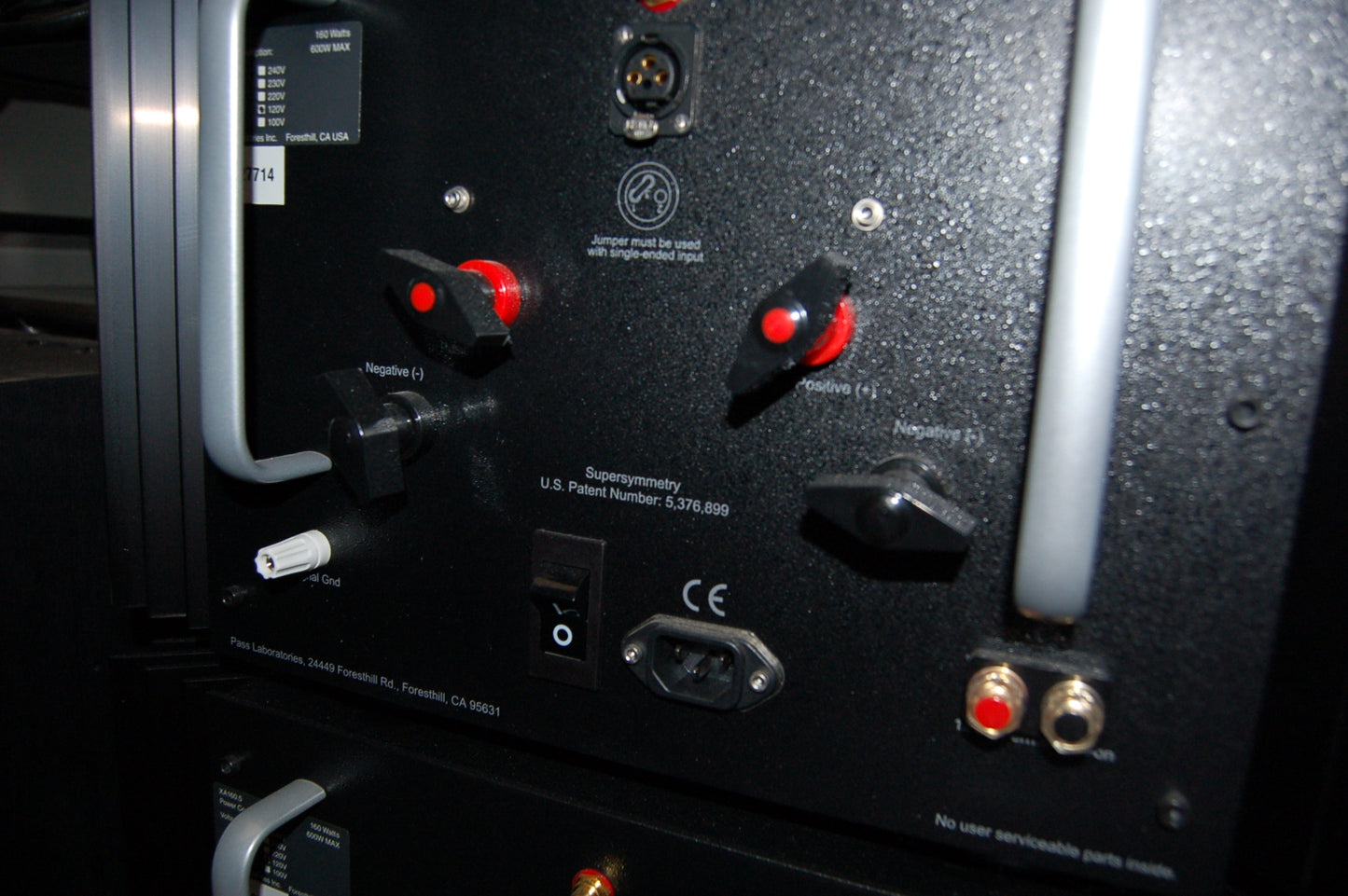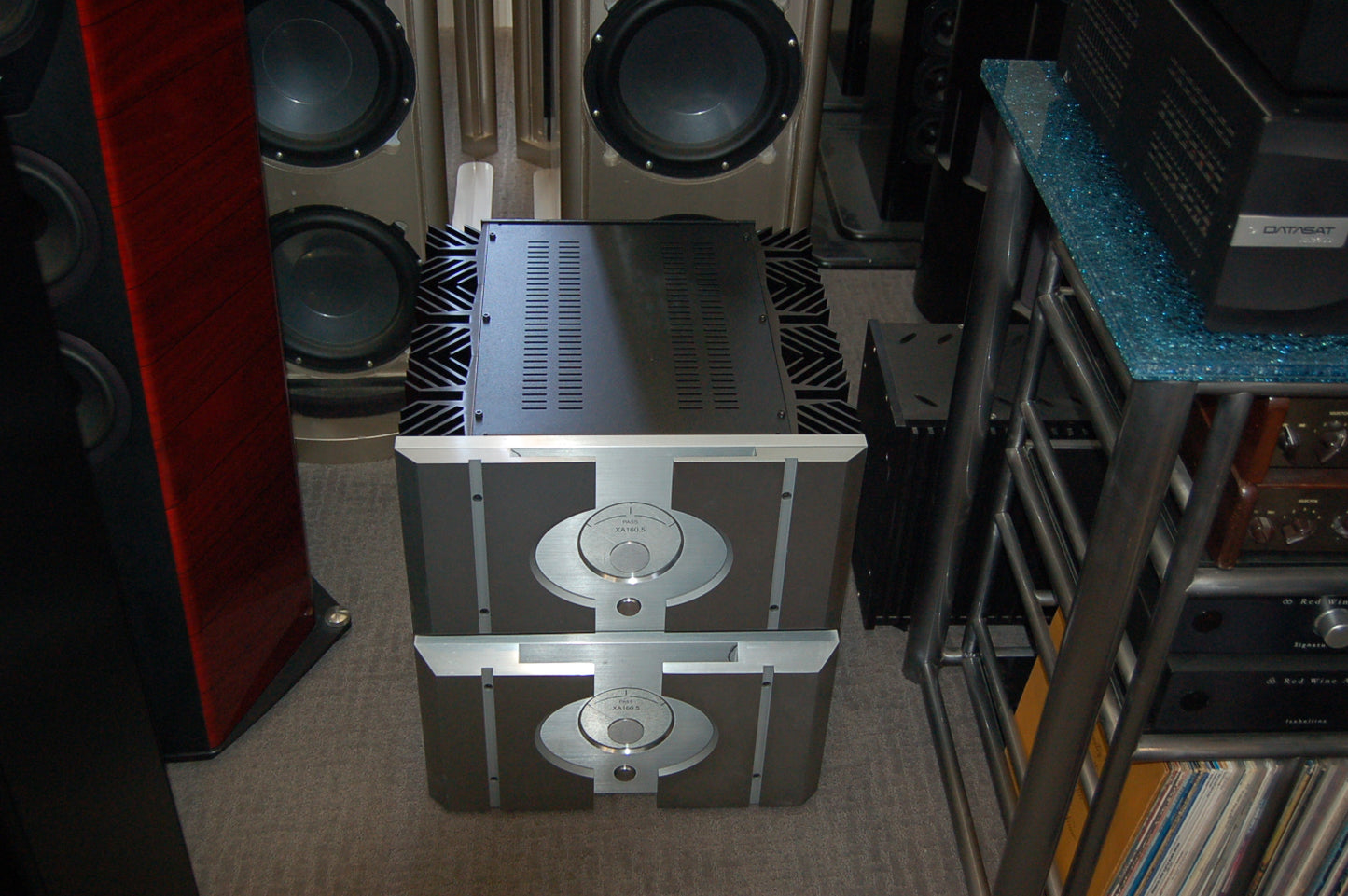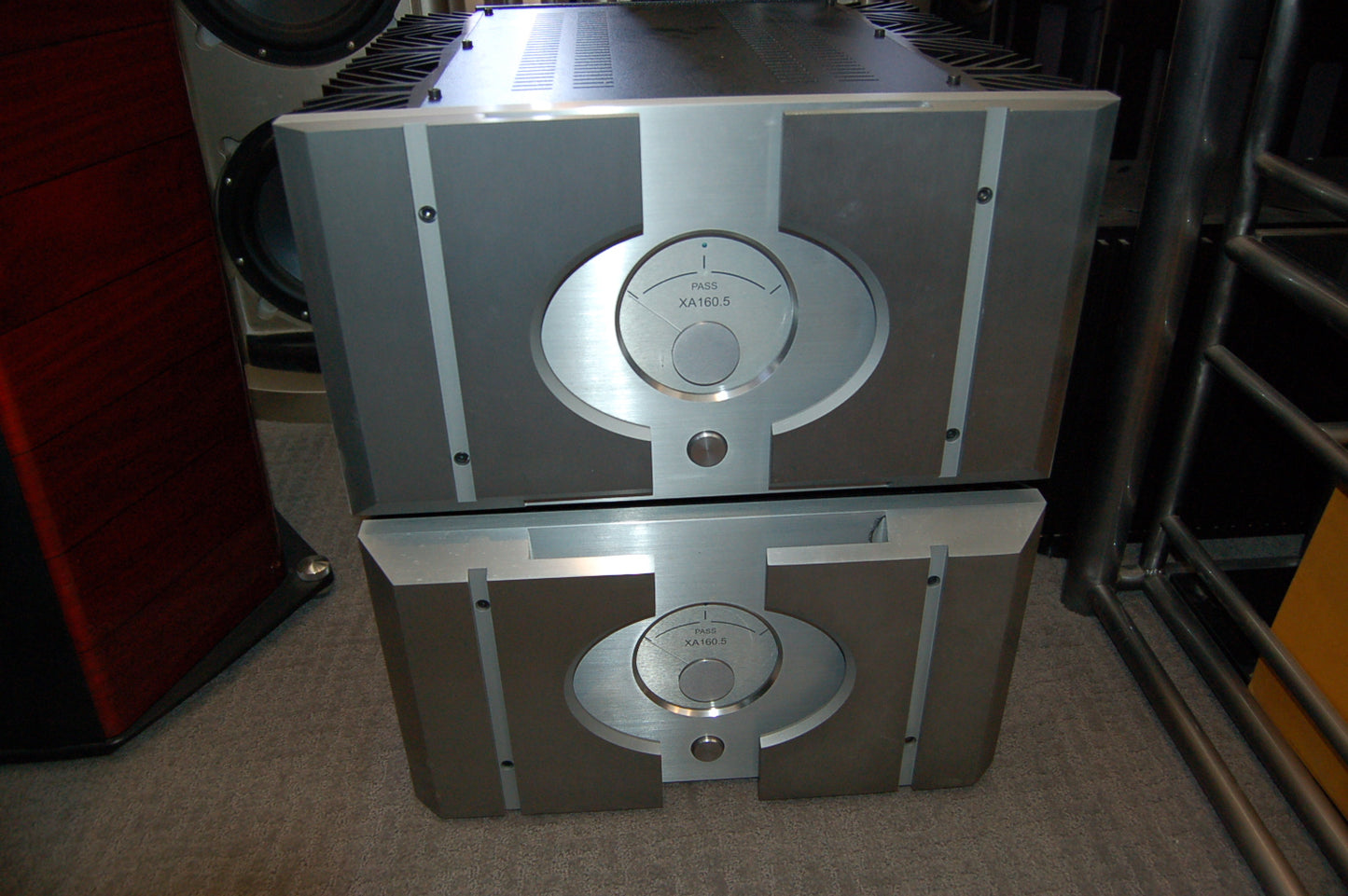Couldn't load pickup availability
very good condition. Must ship freight due to size/weight. Will ship in original factory packaging
If you are new to the world of high-end audio, you can get the condensed history of Pass Labs here: http://www.passlabs.com/about.htm. The shorter version is simple: Nelson Pass is a genius. He’s probably got more patents for amplifier design than almost everyone else combined. And he’s got a great sense of humor, too. The owner’s manual describes the new amplifier as “tending to run heavy and hot, but elicit high performance and reliability from simple circuits.”
Weighing in at about 130 pounds each and $24,000 per pair, the XA160.5s are not for the light of wallet—or bicep. Or, for that matter, air-conditioning capacity. The power draw isn’t huge, but each unit sucks 600 watts from the power line, whether idling or at full power. Because they only produce 160 watts per channel into 8 ohms, doubling into a 4-ohm load, they get very warm to the touch. Yes, this behavior is normal for a class A design. The extra heat was welcome in March when the amplifiers arrived, as it kept our studio toasty. Yet, as days got longer, the amps forced us to run the A/C well before we normally would.
Staggering Pace and Tonality
While classical music plays to one group of the XA160.5s strengths, revisiting the recently remastered Beatles catalog plays to another: These amplifiers offer rock-solid pace. Violins in the mono version of “Eleanor Rigby” (from Revolver) were strongly anchored, and Lennon and McCartney’s voices unwavering. There was so much depth, it almost sounded like a stereo recording! Speaking of the latter, the stereo version of “Penny Lane” from Magical Mystery Tour turned out to be just as exciting. Ringo Starr’s drumming and McCartney’s bass held true throughout the psychedelic soundscape.
I am easily swayed by the big sound of these amplifiers, yet that characteristic only scratches the surface of their capabilities. Concerning tonal accuracy and texture? Spot on. Acoustic instruments sound correct, whether listening to wind, string, or percussion instruments. Dynamic contrasts equate to the best I’ve experienced. A few TONE writers whose tastes skew towards classical remain astonished at the lifelike piano reproduction.
Music fans that crave vocal performances will benefit from the XA160.5’s picture-perfect tonality and resolution. Again, the extra tonal body almost feels as if one is listening to an SET—albeit an SET with nearly unlimited power that you can use with real-world speakers. The extra low-level resolution goes a long way, especially when spinning marginal discs. An ideal example comes courtesy of Keith Richards’ Talk is Cheap. Richards is not known for possessing a terribly strong lead vocal. Yet, when put through the XA160.5s, it actually has some depth. Such is the XA160.5s’ allure. They hover at the optimum point of boasting maximum resolution without being harsh, sounding full bodied and musically natural without introducing tonal distortion— a difficult balancing act.
Bass response keeps in line with the exceptional performance found elsewhere in the frequency range. While the XA160.5s have more than ample weight and slam, the bass reveals a level of texture and detail that I’ve only experienced with a small handful of amplifiers. Remember: It’s easy to confuse “audiophile bass” (usually over-damped and distinguishable from the real thing that has life, texture, and resonance); the XA160.5’s are the genuine article. A cursory listen to your favorite acoustic bassist reveals the way these amplifiers allow the instrument to breath, and brings you that much closer to the actual performance.
| Class | A | Input Impedance (SE & BAL Kohms) | 30/20 |
| Type | Mono | Damping Factor | 200 |
| Gain (dB) | 26 | Output Noise (uV) | 200 |
| Full Pwr @ 26 dB gain (V) | 1.79 | Power Consumption (Watts) | 600 |
| Low Frequency Response | 1.5 Hz | Temperature (deg C.) | 53 |
| High Frequency Response | 100 KHz | Number of Chassis | 1 |
| Power Output/ch (8 ohm) | 160 | Dimension (W x H x D) (In.) | 19 x 11.2 x 22.5 |
| Power Output/ch (4 ohm) | 320 | Unit Weight (LBS) | 131 |
| Distortion (1 KHz, full power) | 1% |
